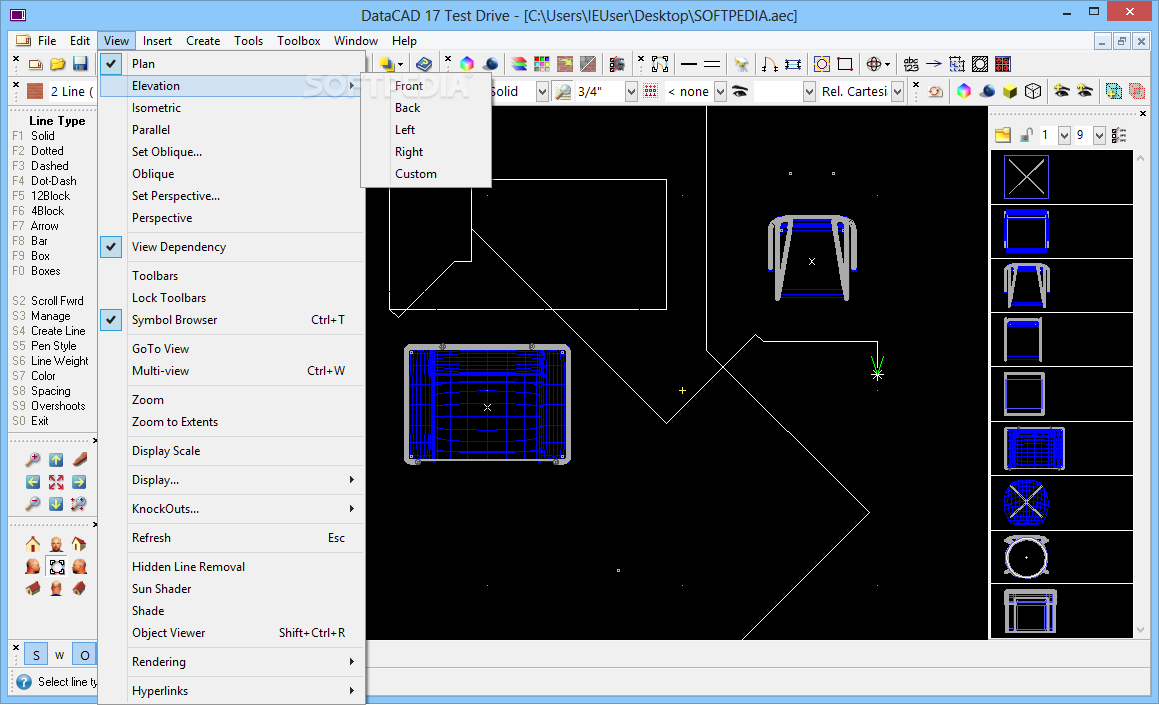
What are the tell-tale symptoms of your amp having worn-out valves? If you’re playing an amp on a regular basis it’s a good idea to change your output valves once a year.” “I speak to guys who change their valves meticulously every six months but there are others, including myself, who leave it a bit longer.

We asked him for his tips on keeping your valve amp toned.
#How to create a wall tone in datacad 19 how to#
PRO TIP: Know your amp betterĬhris George has played through more high-end valve amps than most rock stars, and advising how to get the best fromamps is his daily bread and butter.

Reverb is the only effect that traditionally works best when placed after your delay effects and, as such, should be tail-end Charlie if you’re using a pedal rather than the reverb in your amp.Ĭhris George from Marshall Amplification reveals all.They’re also good when placed in your amp’s FX loop, if it has one.
 Delay and echo effects are designed to repeat what’s been played into them so place them towards the back of the signal chain. It’s worth mentioning that many analogue pedals – particularly Univibes and their myriad clones – often work better in front of distortion. Modulation effects such as chorus, flanger and phaser usually work best after distortion. It’s worth knowing that some boutique boosts, overdrives and fuzzes only work best when they’re very first in line, however. We’ve come to prefer heavier distortions first, then lighter overdrives, then boosters. Distortion and overdrive effects should also come near the beginning of your signal chain. Also, compressors tend to work best when placed before drive effects. Try it – put your wah before and after your distortion and listen to how different it sounds. The one exception is the Fuzz Face or any vintage-style fuzz, which needs to be slotted in before the wah. Wah and EQ manipulators work best before distortion and overdrive devices, near the start of the signal chain. There are always compromises to be made, and there is no ultimate right and wrong, but if you start here then you’ll be in the company of many famous players. The order in which your effects pedals appear in the signal chain on your pedalboard makes a big difference to the resultant tone. The numbers don’t look that different, but the difference in terms of perceived volume is truly staggering. A Jensen P10R, for example, is rated at 95dB a Celestion G12 65 at 97dB and an EVM12L at 100dB. This has more to do with how loud a speaker sounds than its power rating. Efficiency – also called sensitivity this is measured in dB at a distance of one metre. Too powerful and they can sound very squeaky clean not powerful enough, and they can become a flabby mess, or fail entirely. Power rating in watts – the higher rated your speakers are, the less they will distort under heavy volume. Most guitar speakers have ceramic magnets, with only a handful – headed up by the Celestion Blue – using Alnico. Ceramic and Alnico are the most common magnet materials the latter usually associated with more vintage, 1960s tones. Magnet weight and type – heavy magnets usually mean higher power handling. The variables are myriad, but the key spec points to understand are:
Delay and echo effects are designed to repeat what’s been played into them so place them towards the back of the signal chain. It’s worth mentioning that many analogue pedals – particularly Univibes and their myriad clones – often work better in front of distortion. Modulation effects such as chorus, flanger and phaser usually work best after distortion. It’s worth knowing that some boutique boosts, overdrives and fuzzes only work best when they’re very first in line, however. We’ve come to prefer heavier distortions first, then lighter overdrives, then boosters. Distortion and overdrive effects should also come near the beginning of your signal chain. Also, compressors tend to work best when placed before drive effects. Try it – put your wah before and after your distortion and listen to how different it sounds. The one exception is the Fuzz Face or any vintage-style fuzz, which needs to be slotted in before the wah. Wah and EQ manipulators work best before distortion and overdrive devices, near the start of the signal chain. There are always compromises to be made, and there is no ultimate right and wrong, but if you start here then you’ll be in the company of many famous players. The order in which your effects pedals appear in the signal chain on your pedalboard makes a big difference to the resultant tone. The numbers don’t look that different, but the difference in terms of perceived volume is truly staggering. A Jensen P10R, for example, is rated at 95dB a Celestion G12 65 at 97dB and an EVM12L at 100dB. This has more to do with how loud a speaker sounds than its power rating. Efficiency – also called sensitivity this is measured in dB at a distance of one metre. Too powerful and they can sound very squeaky clean not powerful enough, and they can become a flabby mess, or fail entirely. Power rating in watts – the higher rated your speakers are, the less they will distort under heavy volume. Most guitar speakers have ceramic magnets, with only a handful – headed up by the Celestion Blue – using Alnico. Ceramic and Alnico are the most common magnet materials the latter usually associated with more vintage, 1960s tones. Magnet weight and type – heavy magnets usually mean higher power handling. The variables are myriad, but the key spec points to understand are: 
You barely give them a second thought, but speakers are where your sound comes from! And boy do they sound different.








 0 kommentar(er)
0 kommentar(er)
